Overview of Butterfly Antennae
Butterfly Antennae serve various purposes beyond just looking good. The unique sensory appendages that protrude from their heads, help in navigation, detecting food, avoiding predators and mates. Let’s dive deeper into the fascinating anatomy of butterfly antenna.
| Sensory receptors | Purpose |
| Cheminformers | Help butterflies navigate by sensing different chemical gradients and finding food. |
| Mechanoreceoptors | Respond to vibrations that are caused in the environment by fluttering objects or beating wings of predators. |
| Thermotactile receptors | Senses the temperature changes in the immediate environment and helps them adjust accordingly. |
It is fascinating that some butterfly antennae have multiple rows of chemosensors while others have intricate patterns on their antennae that perform similar functions. Furthermore, as a defense mechanism, some butterflies can hide antennae when predators approach.
Curious about what more these delicate creatures possess? Don’t miss out on exploring the array of colors they exhibit and what they mean!
Why do butterflies need antennae? To stay ‘antennae’ on their surroundings.
Functions of Butterfly Antennae
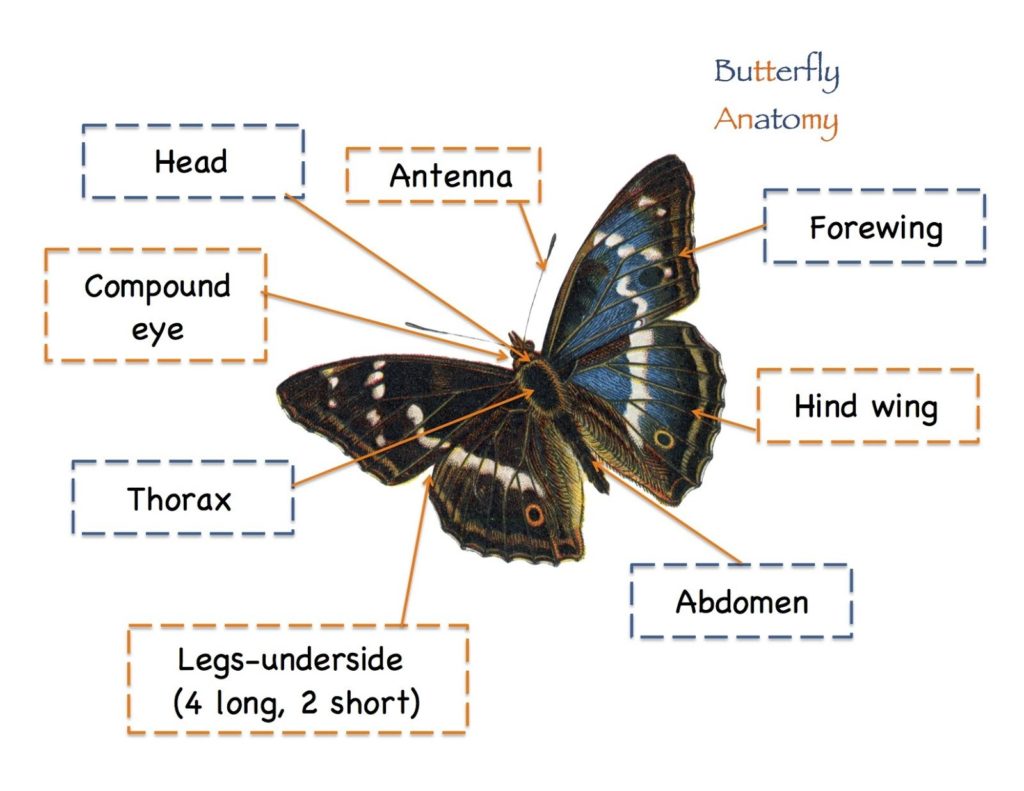
Paragraph 1: Butterfly antennae serve various functions essential to their survival.
Paragraph 2:
| Function | Description |
|---|---|
| Smelling | Used for finding food and locating mates through scent particles |
| Touching | Detecting wind currents and obstacles in flight, and sensing the texture of surfaces |
| Hearing | Detecting sound frequencies through vibrations in the air |
| Balance | Acting as a counterweight during flight and aiding in maneuverability |
In addition to their primary functions, butterfly antennae can also aid in thermoregulation and act as a visual cue for predators to avoid attacking.
Paragraph 4: Pro Tip – When observing butterfly behavior, pay attention to their antennae movements for clues about their environment and intentions. As it turns out, butterflies don’t just smell the flowers, they also use their antennae to get a whiff of that sweet, sweet nectar.
Detecting Smells
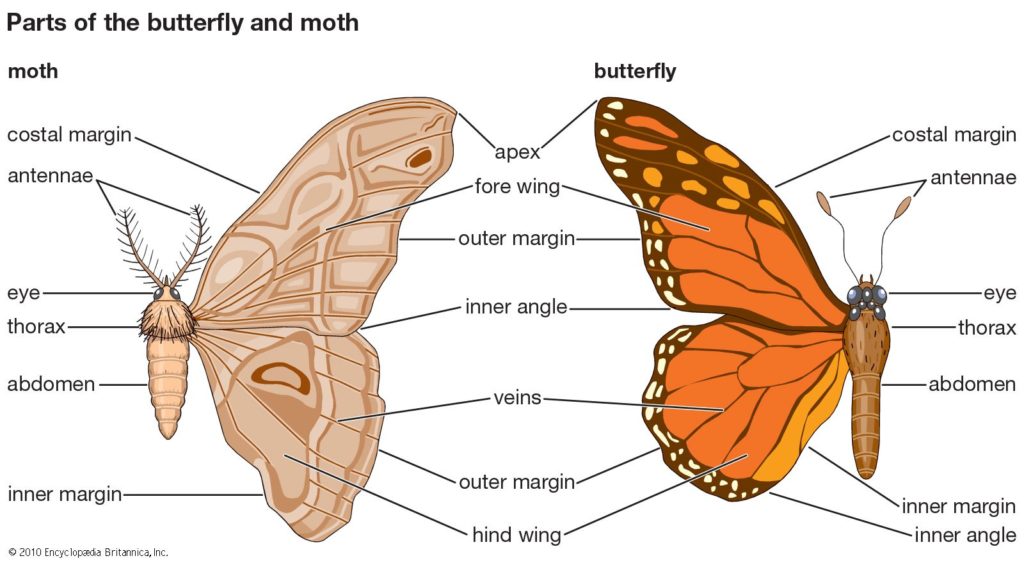
The antennae of a butterfly serve as highly efficient sensors, detecting and interpreting a wide range of chemical signals in the environment. These signals are called pheromones and are released by other butterflies for mating purposes or for marking their territory. The butterfly’s antennae help it to detect smells from long distances away and also determine the direction from which they are coming.
Furthermore, the antennae act as an aid to several other important functions such as maintaining balance, sensing wind speed, and knowing its position in space. They also sense humidity levels in the air, which provide crucial information about potential breeding areas or nectar sources.
Unique details about butterfly antennae include their complexity; they have sensory organs that can differentiate between different molecules and interpret complex chemical signals. Another fascinating fact is that some butterfly species have modified antennae that allow them to hear sounds produced by potential predators.
It is said that during migration, monarch butterflies use the Earth’s magnetic field to orient themselves towards their destination. To do this accurately, they rely on the specialized sensory cells inside their antennae that can sense magnetic fields and use them for navigation.
In summary, butterfly antennae are incredibly complex sensory organs that play a crucial role in many aspects of a butterfly’s life. These delicate structures help butterflies navigate their environment, find food and mates, avoid predators and locate suitable habitats.
Who needs a weatherman when you’ve got butterfly antennae sensing air currents like a pro?
Sensing Air Currents
The butterfly antennae possess the unique ability to sense the slightest air currents. These specialized sensory organs detect odor molecules and help butterflies navigate, locate food sources, and recognize potential mates. Through dynamic movements of their antennae, butterflies can sample different gradients in the air, allowing them to accurately detect even trace amounts of scent.
The hairs on butterfly antennae are responsible for detecting odorants. These hairs are closely spaced and each hair contains both a chemosensor cell and a mechanosensor cell. As the air currents move through the spaces between these hairs, it causes certain hairs to bend in response to the flow direction and push against specific mechanosensors cells, which triggers a signal that informs the butterfly about the wind’s speed and direction.
Additionally, some butterfly species have extra receptors on their antennae that allow them to perceive other stimuli like humidity or temperature fluctuations present in their environment.
Pro Tip: The shape and size of butterfly antennae vary across species, influencing how they detect chemicals in the air. Learning more about an individual species’ antennae can help with identifying its behaviors and understanding its ecological role.
When it comes to finding a mate, butterfly antennae put Tinder to shame.
Identifying Mates
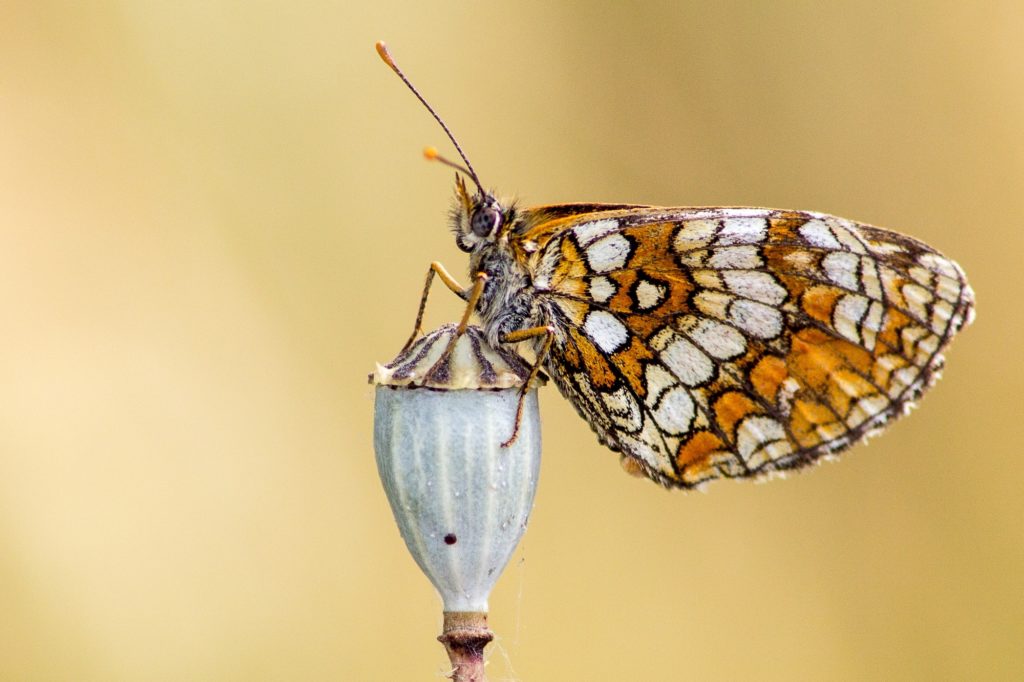
Butterfly Antennae and Their Significance in Finding Mates
Butterflies rely greatly on their sense of smell to locate their potential mates. The complex structures of butterfly antennae detect pheromones from miles away, leading the butterfly towards a suitable mate.
- Antennae serve as an olfactory organ for butterflies.
- The long hairs on antennae are key in detecting pheromones emitted by females of the same species.
- Male and female antennae differ in structure, size and shape – primarily for distinguishing opposite sex counterparts.
- In addition to detecting pheromones, antennae also help butterflies distinguish between nectar-producing flowers and non-edible plants through sensory cues present in flowers’ fragrances.
- An antennal lobe exists inside the butterfly’s brain which receives chemical signals from antennae to decode messages and identify mates or food sources.
Notably, some species have evolved elaborate wing flaps either on their wings or torso as visual cues to aid in mate recognition. These distinct adaptations facilitate courtship displays, boost reproductive fitness and enable species-specific variations.
Historically, scientists hypothesized that male butterflies’ large antenna size served as parallel receivers – enabling males greater advantage when competing for females. However, more recent studies suggest that antenna length may have another purpose – specifically disrupting allometry to skew scale distribution pertaining to mating success between larger and smaller males among specific species.
Who needs a phone when you have butterfly antennae? They can communicate with anyone within a few miles, and without a monthly plan.
Communicating
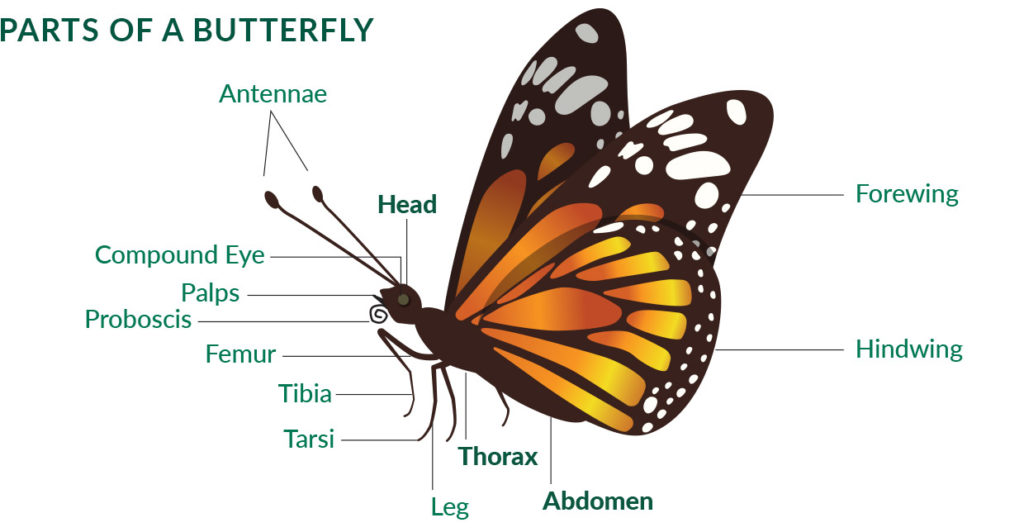
Butterfly Antennae and Their Role in Information Exchange
Butterfly antennae play a crucial role in gathering information from their environment. They are highly sensitive to different stimuli, allowing for effective communication with potential mates, predators, and food sources.
- Detecting pheromones: Butterfly antennae can detect pheromones – chemical substances released by potential mates. This helps the butterflies identify suitable partners for reproduction.
- Sensing the environment: These sensory organs can sense temperature, humidity levels and air currents around them to adapt their behavior accordingly.
- Identifying predators: By detecting chemicals released by predators -like birds- butterfly antennae alert them to imminent danger.
- Finding a food source: they also help locate nectar-rich flowers as they can pick up on sweet smells simultaneously
Research shows that antennal movements act as an additional mechanism in conveying information between individuals or aiding communication strategies further.
When a butterfly touches its antenna to another butterfly’s antenna, it may convey information about its location or may simulate courtship behavior. Some species of butterflies even use unique flutter patterns or frequency modulation in flights to communicate with other members of their species.
Experts often suggest planting nectar-rich flowers near habitats for peaceful butterfly survival and communication strategies. Another idea is placing artificial substrate designed-like natural fibers- on vegetation where young larvae live during development stages; this will improve their chances of finding safe environments while helping with productive communication within populations.
Who knew butterfly antennae were more than just a fashion statement? Turns out they’re also great at keeping these fluttery insects upright and balanced.
Providing Balance

To maintain stability, butterfly antennae have sensory hairs that act as gyroscopic sensors. Through the balance of these hairs, butterflies can perceive changes in their body position and adjust accordingly to maintain equilibrium while flying. This ability is essential for a butterfly’s survival as even the slightest turbulence or gusts of wind can easily unbalance them mid-flight.
Butterfly antennae also help with navigation and orientation. These organs are capable of detecting changes in airflow and air pressure, which helps butterflies to locate nearby food sources or avoid predators. The sensitivity of these organs plays an important role in allowing butterflies to move swiftly through their environment without colliding into objects.
Moreover, butterfly antennae have thermoregulatory functions. They can detect small temperature differences in the environment that help them regulate their body temperature; this is especially important for cold-blooded animals like butterflies, whose body temperature is influenced heavily by external conditions.
To ensure healthy butterfly populations, it’s crucial to avoid disrupting their antennae during capture or handling. Additionally, providing habitat continuity and non-toxic environments are key ways to protect these vital sensory organs from damage or disease. Ensuring that our actions don’t disrupt these delicate balancing mechanisms will ultimately contribute towards protecting butterfly populations worldwide.
Who knew the key to a butterfly’s heart was through their antennae? Looks like they weren’t just flying around aimlessly after all.
Physical Structure of Butterfly Antennae
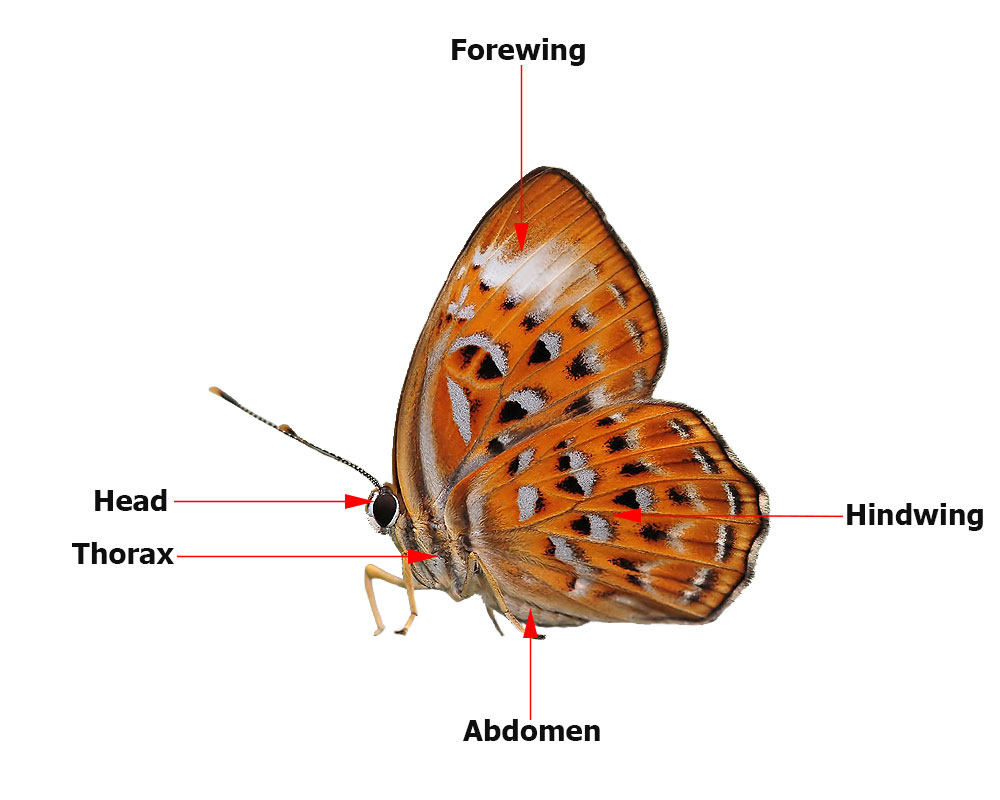
Paragraph 1 – Butterfly antennae play a crucial role in their physical structure, serving as a sensory organ that is pivotal for their survival. These organs are equipped with highly specialized receptors that enable them to sense a wide range of environmental elements.
Paragraph 2 – The physical structure of butterfly antennae vary across species, but most of them are characterized by a slender and elongated shape that is composed of several segments. Each segment bears a set of sensory hairs or sensilla that are finely tuned to detect different stimuli, including pheromones, temperature, humidity, and air currents.
Paragraph 3 – Butterflies also use their antennae to communicate with other members of their species, particularly during courtship or mating rituals. Some butterflies, such as the males of the hairstreak species, have specialized structures called scent brushes on their antennae that disperse pheromones to attract females.
Paragraph 4 – To maintain the integrity of their antennae, butterflies require specialized care. Ensuring that they have access to a clean and pesticide-free environment is essential. Additionally, providing a varied and nutritious diet can support their overall health, which can positively impact their sensory capabilities. In summary, caring for butterfly antennae is crucial for preserving their species and their invaluable role in the ecosystem.
Butterfly antennae are like antennas on a car – different models for different purposes, and yet still remarkably useless for finding a good radio station.
Types of Butterfly Antennae
Butterflies belong to the order Lepidoptera and have a wide range of antenna shapes and sizes. The physical structure of butterfly antennae can be classified into several types based on their morphology.
- Club-shaped Antennae – These antennae are characterized by a gradual increase in thickness at the tip, forming a club shape.
- Thread-like Antennae – Thin and elongated, these antennae lack the characteristic bulge of club-shaped antennae.
- Sawtoothed Antennae – These antennae are serrated like a saw blade, with pointed teeth along their length
- Feathered Antennae – Consisting of narrow branches extending outwards like feathers, these antennae often have fine hairs on them.
Butterfly antennae come in different varieties that serve various purposes depending on the species. Some butterflies use their sense of smell to locate food or mates while others use it for communication. Club-shaped and feathered antennae provide greater surface area for capturing scent molecules, while thread-like and sawtoothed antennae offer increased sensitivity to mechanical stimuli.
The size and shape of butterfly antennae can differ significantly between males and females within a single species with males typically having larger, more elaborate antennae than females. These antennas serve as markers for sex recognition during mating.
To ensure the health and vitality of butterfly populations, it is recommended that we avoid using insecticides that may damage or alter butterfly sensory structures such as their delicate antenna arrangements.
Understanding the physical structure of butterfly antennae can help us understand how they interact with the environment around them. By understanding these subtle variations in morphology and function between different species, we can appreciate the complexity present within this fascinating group of insects.
Why should butterflies bother with online dating when they can just check out each other’s antennae for gender differences?
Differences between Male and Female Butterfly Antennae

In butterfly species, there exists a subtle difference between the structure of male and female antennae. The antennae are responsible for sensing various stimuli in their environment, such as pheromones to locate other butterflies.
A table can visually represent these differences:
| Aspect | Male Antennae | Female Antennae |
|---|---|---|
| Length | Longer | Shorter |
| Width | Narrower | Wider |
| Shape | Club-shaped with thin tips | Straight with thicker tips |
It’s worth noting that the male’s longer and narrower antennae allow them to detect females from a greater distance, while the wider female antennae pick up a broader range of signals.
Apart from size differences, male antennae may also have specialized structures dedicated to detecting scent molecules – called sensilla – whereas females can use their antennae both for mating and sensory perception.
Interestingly, research has shown that some moths and butterflies can even “hear” through their antenna receptors. For instance, the Hawkmoth is known to use its antennal ears to pick up high-frequency sounds.
As per Science Daily, recent research conducted by the University of California San Diego revealed that “Butterfly wings are covered in layers of tiny scales that attach to hair-like structures in a way that creates color among other things.”
The physical structure of Butterfly bodies remains truly fascinating, given their wide variety across species.
Butterfly antennae: because without them, butterflies would just be winged accessories.
Importance of Butterfly Antennae

Butterfly Antennae – Vital for Navigation and Survival
Butterfly antennae are essential for their navigation and survival. These delicate sensory organs detect chemical signals, temperature, humidity, and air currents. They help identify food, mates, predators, and suitable habitats. Antennae also enable butterflies to maintain balance in-flight, detect wind directions and speed, and avoid obstacles.
Moreover, butterflies use their antennae during mating rituals to sense pheromones and chemical cues. Male butterflies use their antennae to identify the species and sex of potential mates. Some butterfly species have elaborate and ornate antennae used for visual displays during mating.
It is crucial to note that butterflies can detect and distinguish small changes in the environment due to their sensitive antennae. Even a slight variation in temperature or humidity can affect their behavior, migration, and breeding patterns.
Pro Tip: Avoid touching butterfly antennae as they are highly sensitive and delicate. Any damage caused to their antennae can affect their ability to navigate, feed, mate, and survive.
Why did the butterfly go to therapy? To work through its antenna issues and avoid any negative impact on the ecosystem.
Impact on the Ecosystem
Butterfly antennae play a crucial role in the ecosystem. They allow butterflies to locate food sources, potential mates, and avoid predators. Without antennae, these delicate creatures would struggle to survive. The impact of their absence would extend beyond the world of butterflies, affecting the entire ecosystem.
In addition to their sensory functions, butterfly antennae also have unique physical properties that aid in flight and thermoregulation. Their highly sensitive structure can detect even slight changes in wind direction and speed, allowing them to adjust their flight path accordingly. Antennae can also act as miniature radiators or heat exchangers, helping butterflies maintain optimal body temperature.
Understanding the importance of butterfly antennae is essential for promoting insect conservation and preserving biodiversity. As we continue to face threats like habitat loss, climate change, and pesticide use, protecting pollinators like butterflies becomes more crucial than ever before.
Take action today by planting native plants that attract butterflies to your yard or supporting organizations dedicated to protecting these vital species. Don’t miss out on the chance to make a positive difference in our world’s fragile ecosystem. Who knew that studying butterfly antennae could be more exciting than watching paint dry?
Research on Butterfly Antennae

Butterfly Antennae – Studying their significance
Butterfly antennae are pivotal in various crucial activities of a butterfly’s life. These remarkable organs are integral for several tasks like finding food, locating mates, detecting predators and sensing various environmental cues like humidity and temperature that helps them find their way during migration.
A table detailing the importance of butterfly antennae:
| Functions | Description |
|---|---|
| Food Location | Recognize nectar sources from long distances. |
| Mating | Detect pheromones to locate mates. |
| Navigation | Sense wind direction and changes in temperature to navigate during migrations. |
| Predator detection | Detect approaching threats and warn butterflies or moths about impending danger. |
Interestingly, researchers have found that the movements of the butterflies’ antennae also play a significant role in closing the wings together after flight. When these organs brush against each other on top of the head, they employ electrostatic forces that help in attaching both wings correctly.
Pro Tip: When studying butterfly behaviors, make sure you take detailed notes on the position, movement patterns, and interactions with their antenna to get unique insights into how they use this remarkable organ to perform an array of daily chores.
Conclusion and Future Studies
Research suggests that butterfly antennae have multiple uses beyond just detecting scents and odors. Possible future studies could further investigate the sensory receptors and mechanisms used by butterflies to interpret visual, auditory, and temperature cues. By delving deeper into these fascinating adaptations, we can gain a better understanding of how these delicate creatures thrive in their environments. Additionally, as technological advancements improve our capacity for biomimicry, studying butterfly antennae could lead to groundbreaking innovations in areas such as sensing technology and robotics.
A lesser-known use of butterfly antennae is their ability to detect moisture levels in the environment, which is essential for regulating water balance within the insect’s body. This unique adaptation allows certain species to survive in harsher climates with little access to standing water sources. With so much still unknown about butterfly biology, there is much room for exciting discoveries and breakthroughs in this field.
Pro Tip: Insect populations are declining worldwide due to habitat loss and climate change. By creating pollinator-friendly gardens and supporting conservation efforts, we can help protect these vital creatures for future generations.
Frequently Asked Questions
1. What do butterflies use their antennae for?
Butterflies use their antennae to sense different things in their environment, such as scents, moisture, and air currents.
2. Can butterflies see with their antennae?
No, butterflies cannot see with their antennae. They use their eyes to see, but their antennae help to supplement their vision by providing additional sensory information.
3. How do butterflies use their antennae to find food?
Butterflies use their antennae to smell flowers and other sources of food. They are highly sensitive to scents and can use their antennae to locate nectar or other food sources from a distance.
4. What happens if a butterfly loses its antennae?
If a butterfly loses one or both of its antennae, it can still survive but may have difficulty finding food or mates. The antennae are an important tool for communication and sensing the environment, so losing them can be a disadvantage.
5. Do all butterflies have antennae?
Yes, all butterflies have antennae. They are a crucial part of the butterfly’s sensory system and help it to navigate its environment and find food and mates.
6. How long are butterfly antennae?
The length of a butterfly’s antennae varies depending on the species. Some butterflies have short, stubby antennae, while others have long, slender antennae that can be several times the length of their bodies.








